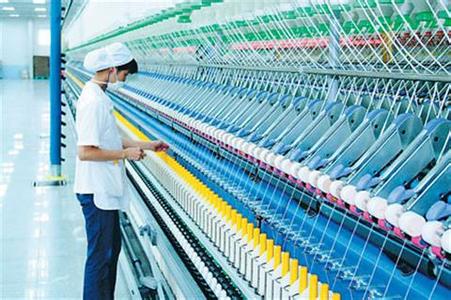The fiscal new China Manufacturing Purchasing Managers' Index (PMI) announced on March 1 was 51.6, a slight increase of 0.1 percentage point from January, indicating that the company's production and business activities continued to improve slightly.
This trend is different from the National Bureau of Statistics manufacturing PMI. The National Bureau of Statistics announced that the manufacturing PMI for February was 50.3, down 1.0 percentage point from January.
In February, China’s manufacturing output maintained growth, but the growth rate was at a slight level, slightly slowing down from January. According to the respondent manufacturers, the increase in new business has led to an increase in output. In the context of stronger customer demand, the total volume of new orders continues to grow. Although the growth rate of new export orders slowed to the lowest level in three months, the growth rate of new orders still exceeded January.

To save costs, manufacturers continue to compress labor. The February employment index fell to the highest level in three months, but the decline was still slight. At the same time, due to the increase in new orders, the pressure on production has been exacerbated, resulting in a continuous increase in the backlog of manufacturing, but it has slowed down compared to January.
In February, manufacturers’ procurement activities maintained a growth trend, but the increase was smaller. Affected by bad weather, the delivery speed of suppliers continued to slow down, but the delay was still slight. The continued expansion of procurement activities has led to an acceleration of procurement inventory, which has been the highest since the past year and a half. The inventory of finished products also ended in a downward trend for eight consecutive months, which has increased.
The increase in raw material prices continued to slow down to the lowest level in seven months, but the increase was still significant. The interviewed manufacturers generally expressed that they were related to the price increase of raw materials. As a result, manufacturers have also raised their factory prices slightly for the ninth consecutive month, and the rate of increase has been similar to that in January.
For the business prospects for the coming year, the industry’s confidence level was the highest in 11 months, due to improved market conditions and the imminent arrival of new products.
Zhong Zhengsheng, chairman and chief economist at Fortune Capital think tank Monita Research, said that the manufacturing boom in February was slightly higher than that in the previous month, and China’s economic resilience was extended. Looking back, the demand for demand in the March start-up season is picking up. Judging the direction of the Chinese economy in 2018 is critical.
May 13, 2018, by the Guangdong Provincial Federation of Industry and Commerce, China Textile Industry Chamber of Commerce, China Elite Association, Guangdong Textile Association, Guangdong Warp Knitting Association, Guangdong Yinan Chamber of Commerce, Guangdong Nanan Chamber of Commerce, Guangdong Clothing and Apparel Industry Association The Sub-Council Creative Subcommittee, Guangdong Province Fujian Minnan Accessories Branch, Guangzhou Shisanhang Chamber of Commerce, Italy Carlo Century Institute of Fashion Guangzhou Branch co-sponsored, Guohe Textile Chain Technology (Guangzhou) Co., Ltd. organized the 018 first block in the world + The textile and apparel industry summit forum was held at the Chimelong International Convention and Exhibition Center. A number of celebrities and blockchain experts in the textile and garment industry started from the development of the blockchain and textile industry and jointly discussed the development prospects of the textile chain.

On the same day, the conference was honored to invite Vice President of the China Textile Industry Federation, Mr. Yang Jichao, President of the China Knitting Industry Association, Mr. Zhou Guolin, Dean of the School of Business Administration of the Guangdong College of Finance, Ms. Song Yankun, Secretary of the Guangdong University of Finance and Management School, and Ganzhou, Jiangxi Province. Ms. Deng Xiaolan, deputy director of Yudu County People’s Congress, Mr. Ma Qiaoqi of the China Art Exchange Association, Mr. He Jianhua, a famous top fashion designer, and Mr. Gao Long, Deputy Secretary-General of the World Digital Currency and Financial Management Committee attended the meeting. .
Vice Chairman of China Textile Industry Federation, Mr. Yang Jichao, President of China Knitting Industry Association, Mr. He Jianhua, a Famous Top Designer in China, Mr. Sun Xiaofei, President of Pierre Cardin China, Honorary President of Guangdong Wenzhou Chamber of Commerce, and Deputy Secretary-General of World Digital Currency and Financial Management Committee Mr. Gao Long and Ms. ZORA, Dean of ESMOD Guangzhou's French Higher Fashion Design Institute, discussed the development prospects of the textile chain, comprehensively analyzed the development status and trends of China's textile and garment industry, and made a deeper application Analysis, pointed out that block technology is to enhance the quality of work and efficiency, help technology innovation, management innovation and business innovation important technical means. The block-connected technology is an important part of the “One Belt One Road Big Strategy” and promotes the simultaneous development of the “three new”. To build a win-win ecosystem for the world textile industry and build a harmonious human economic community as one of its important tasks, and to point out the direction in which industry construction will achieve leap-forward development in the future. Let us further strengthen the overall competitiveness of the industry to achieve sustainable and scientific development of the industry. The inevitable choice of ways, deep integration between the block and the textile and garment industry has become the main theme.
The effect of decree decree since 2016 has continued to haunt small and medium-sized retailers engaged in denim business. This was combined with the introduction of the Goods and Services Tax (GST) and the rise in cotton prices, which apparently had an adverse effect on their business and caused losses.
Many retailers claim that their loyal customer base has been eroded and that cash flow has become quite slow. The decree or decree not only burned holes in their pockets, but also forced them to use cashless transactions, which were the cause of the loss.

According to Vishal Dubey, managing partner of the Indian company based in Bangalore, Denmark, “The effect of decree decree has remained on every retailer. They are now experiencing a different type of economic recession. They no longer exist in the system. In cash transactions, wholesalers insist that transactions take place online and it is very difficult for retailers to reap profits."
In the context of the economic downturn, retailers have no other choice but to cut the price of denim products. Another retailer, Suresh Agarwal, owner of Anant Apparels, headquartered in Ahmedabad, said: "Retailers are looking for other promotional means - by selling large quantities of goods."
Sanjay Soni, owner of Mas Enterprises in New Delhi, expressed a similar view: “Our turnover has had a series of impacts on other aspects and companies have stagnated. It is not just for retailers, manufacturers and distributors, but even wholesalers. Different cashless trading patterns."
2018 The First Forum on the Global Blockchain + Textile and Garment Industry Chain was Held
A number of celebrities and blockchain experts in the textile and garment industry started from the development of the blockchain and textile industry and jointly discussed the development prospects of the textile chain.






